With the rise of ancient Chinese costume "Hanfu culture" among young people, the China-chic has become an unstoppable trend.
The September issue of Harper's BAZAAR e-magazine features a stylish restoration of hanfu, and a closer look at these "trendy elements" from a thousand years ago that are still stunning today.
HAN DYNASTY
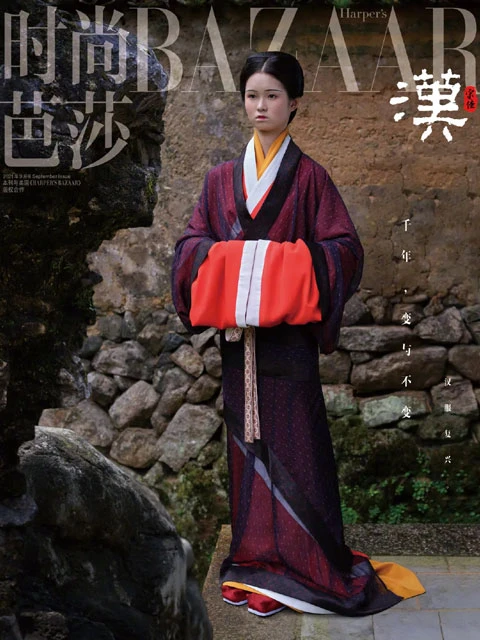
The restored hanfu shot by Harper's BAZAAR
During the Han Dynasty, large-sleeved clothes were popular, called "Zhu Yu (诸于)". The characteristic of large-sleeved clothes is the use of the slanting cutting method, which makes the clothes look wide at the top and narrow at the bottom.
This set of hanfu designs in "Harper's BAZAAR" uses this typical slanting cutting method, which makes the model look taller and slimmer, so it can be said to be a "slimming secret".
During the Han Dynasty, common women wore Ru upper and Qun underneath, which shows that women in the Han Dynasty wore a skirt and a dress as their daily wear.
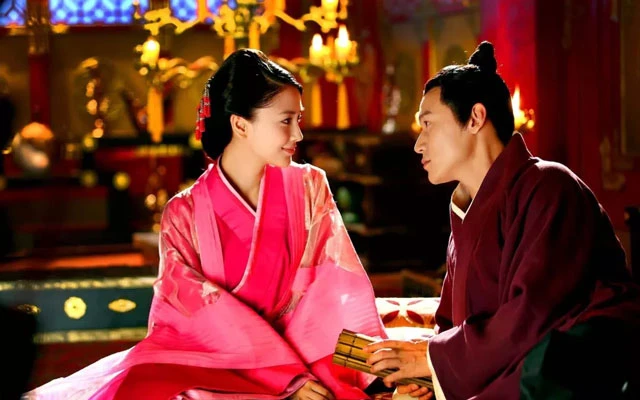
Han Dynasty costumes in the drama
The Han Dynasty was a feudal period with a strict hierarchy, which was also reflected in women's clothing, which could be basically divided into two different dress systems for nobles and commoners.
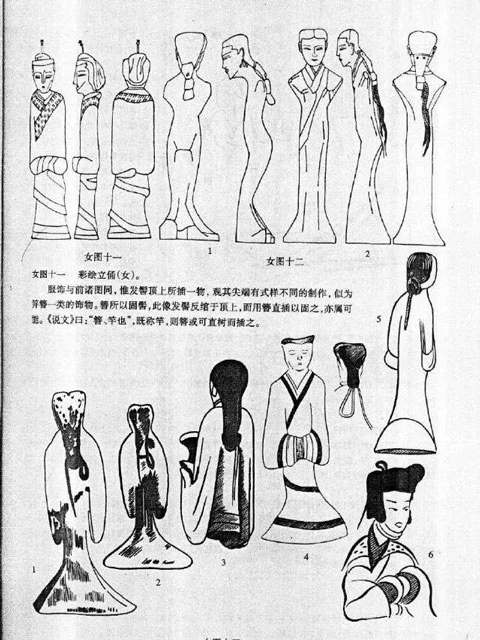
Hairstyle of Han Dynasty women
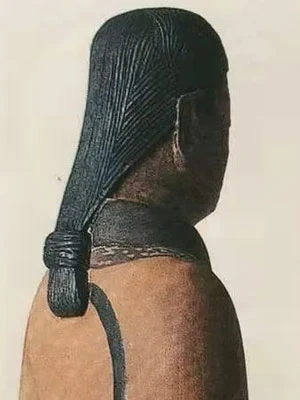
Hairstyle of painted terracotta figurines in the Han Dynasty
The hairstyle of ordinary women in the Han Dynasty was relatively simple. Of course, the noblewomen were not as simple as the common people, they still had a lot of hair ornaments, such as the Buyao (步摇), Erdang (耳珰), Huasheng (华胜) and so on. Among them, the Buyao is probably the most famous hair ornament.
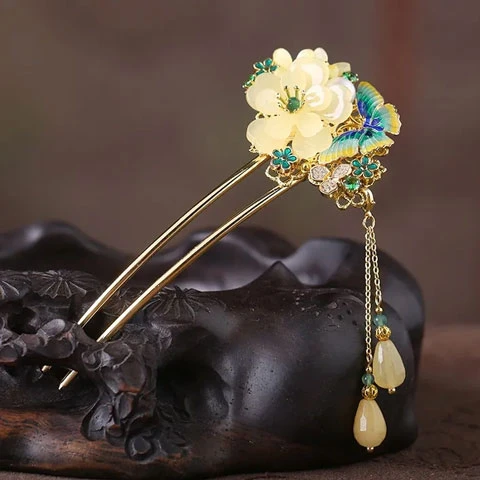
Buyao
The female dancers of the Han Dynasty also dressed differently from the common people, and most of them wore clothes with long sleeves, floating like immortals and beautiful.
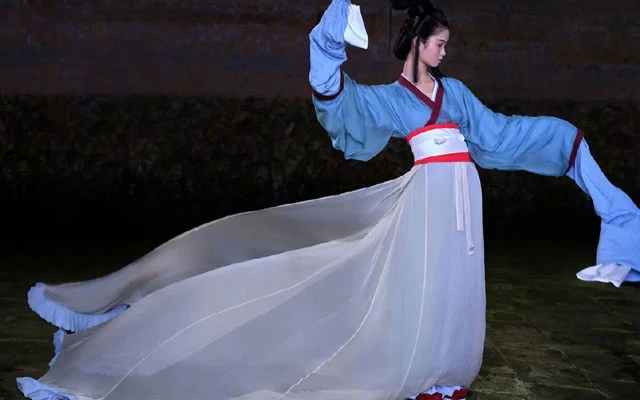
The restored hanfu shot by Harper's BAZAAR

JIN DYNASTY
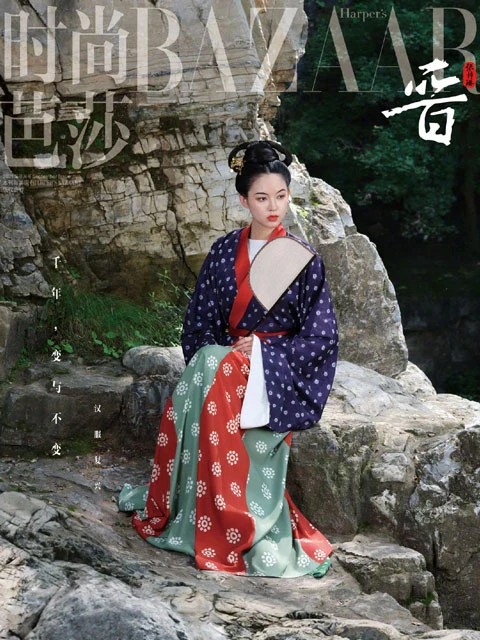
The restored hanfu shot by Harper's BAZAAR
Polka dot floral, bold color blocking, with a small fan, "Harper's BAZAAR" in the Jin Dynasty part of the design looks avant-garde and bright, the ancient people would really dress like this? In fact, girls at that time were more fashionable than we can imagine.
The top jacket of women in the Jin Dynasty is usually called "Bao Yao (抱腰)". Because of it, wearing the Jin Dynasty clothes, you will look thinner.
Similar to the Han Dynasty, women in the Jin Dynasty also wore wore Ru upper and Qun underneath. The Ru were both wide and narrow, so you could choose the version according to your preference, and the patterns on them were also rich and colorful.
The hairstyles of women in the Jin Dynasty were very distinctive, they preferred a wide and flowing style, and there are records of hair buns such as the Liusu Ji (流苏髻), the Zhuima Ji (堕马髻), the Furong Ji (芙蓉髻), etc.
The most special part of the Jin Dynasty costume design in "Harper's BAZAAR" is the fan in the model's hand. The square fan is similar in shape to the one excavated from the Han tomb in Mawangdui, which looks like a door and has a sense of design.
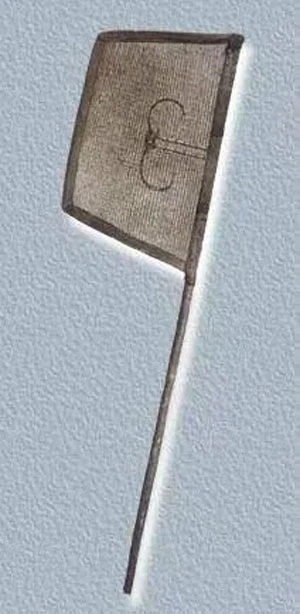
Square fan
However, this square fan was only one of many kinds of fans at that time, and the most popular fan was actually called "Chen Wei (塵尾)", which was mostly used by literati.
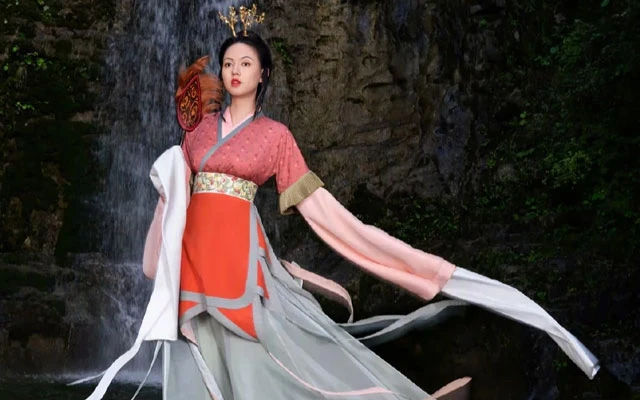
The restored hanfu shot by Harper's BAZAAR
Chen is a giant deer, this animal often flaps its tail to command the deer herd, so it was particularly popular with the literati, who used fans shaped like Chen Wei to represent their status.

TANG DYNASTY
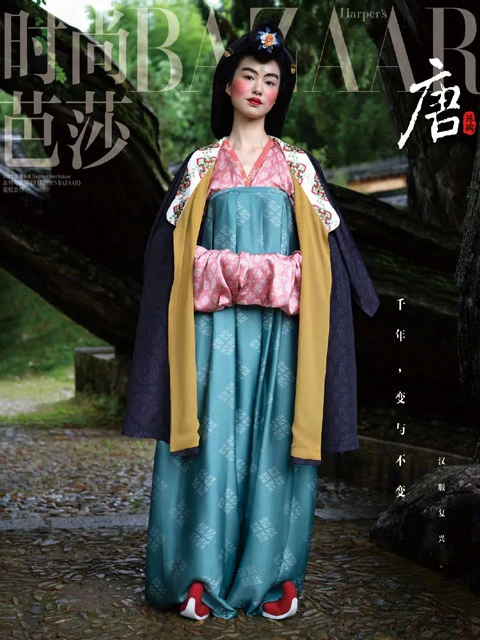
The restored hanfu shot by Harper's BAZAAR
Every Chinese has endless fantasies and expectations about the "Tang Dynasty", and the unique taste of the Tang Dynasty's clothing has become the inspiration for countless artworks in later generations. How did the women of the Tang Dynasty really dress?
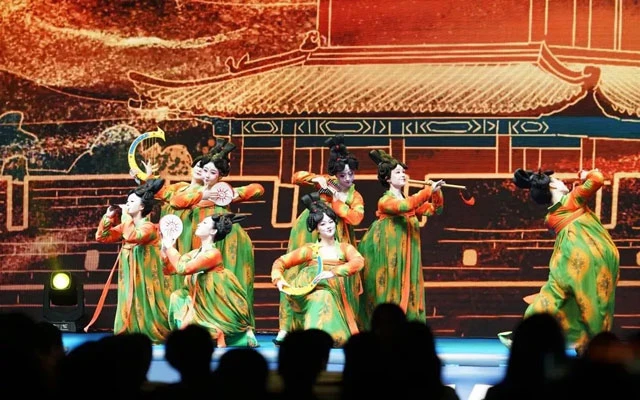
“Tang Palace Night Banquet”
Most of the ordinary women in the Tang Dynasty wore Ru, Ao, and Shan, mostly with narrow sleeves, and skirts with red, purple, yellow, and green skirts. In addition, Tang Dynasty girls had a fashionable item - Pibo (披帛).
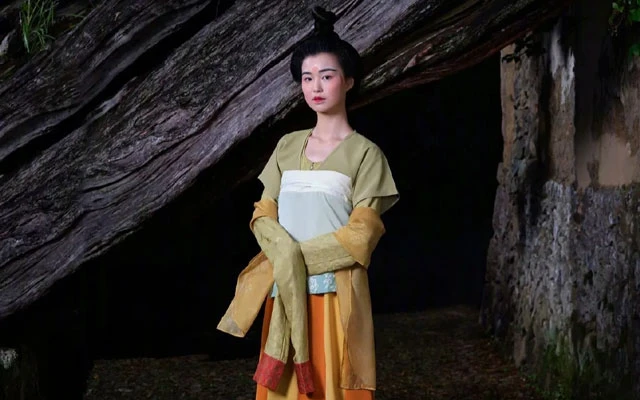
The restored hanfu shot by Harper's BAZAAR
Pibo, the name suggests that the long painted silk is draped between the shoulders and back, wearing the Pibo, the girls became fairy-like.
In addition to the Pibo, Banbi (half-arm, 半臂) is also very common clothing in the Tang Dynasty, Banbi name is very imaginative, blocking half of the arm so the name is half arm.
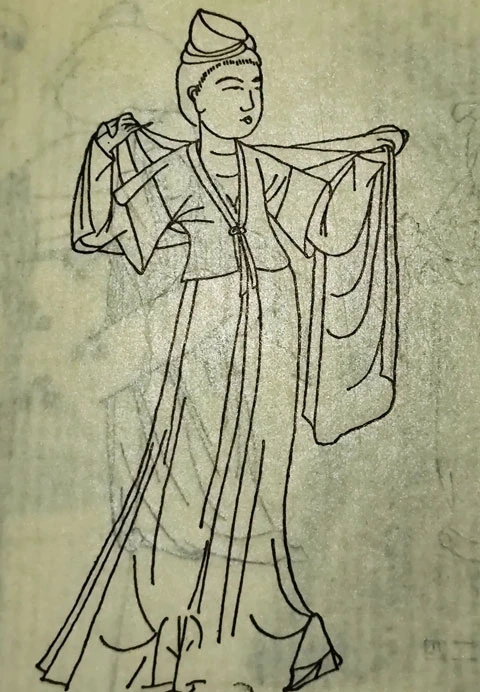
Banbi
The rich and luxurious Tang Dynasty favored exaggerated decorations, especially in their hair. The hair was ringed and hollowed out called Huan (鬟), which was one of the most popular hairstyles for Tang women.
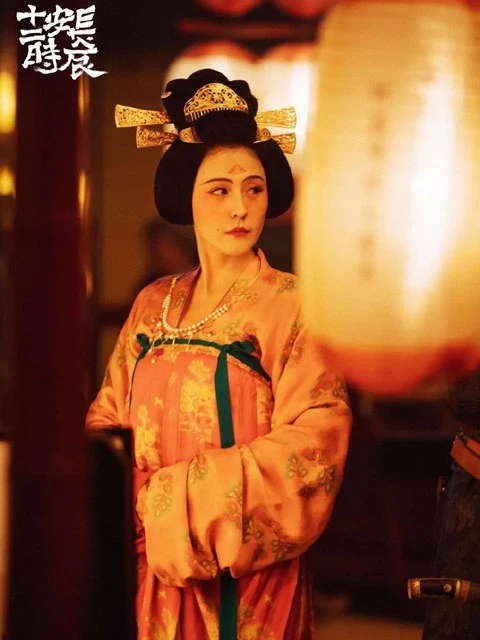
Stills from the drama "The Longest Day In Chang'an"
The girls of the Tang Dynasty liked to wear their hair high to show off their beauty, so a high bun was the most popular at that time. Among the high buns, the phoenix bun was the most beautiful one.
During the Tang Dynasty, the people were more open and the economy was very prosperous. Therefore, the design and creativity of the Tang clothing were unprecedentedly rich, and each of them deserves to be explored in detail.
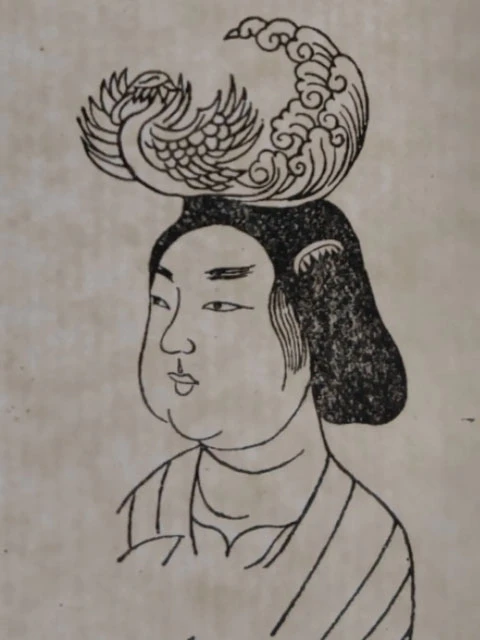

SONG DYNASTY
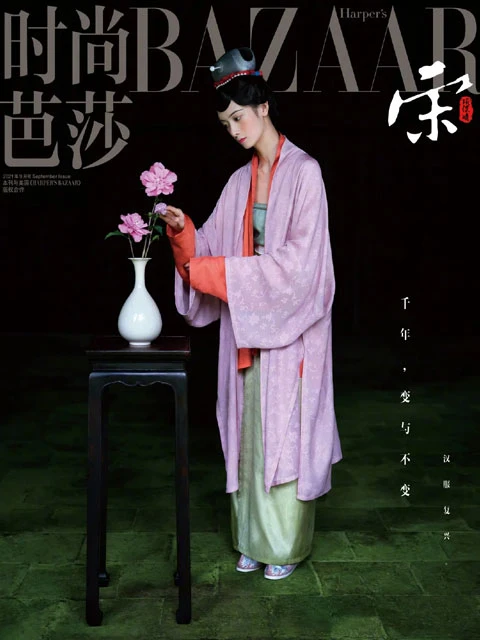
The restored hanfu shot by Harper's BAZAAR
Song Dynasty women's face ornaments are the most characteristic, they often put Huazi (花子) on the forehead and both cheeks. Huazi is a kind of jewelry with metal, there are flowers, birds and other kinds of styles. In addition to flowers, creative Song women would also decorate their faces with small bones from the gills of fish, called "Yu Mei Zi (鱼媚子)".
There is another story about the face decoration in Song Dynasty. It is said that Princess Shouyang, the daughter of Emperor Wu of Song, slept under the eaves of Huanzhang Hall one day and plum blossoms fell on her forehead leaving a beautiful mark. So the palace maids scrambled to emulate this makeup, were definitely the most popular "top fashion" at that time.
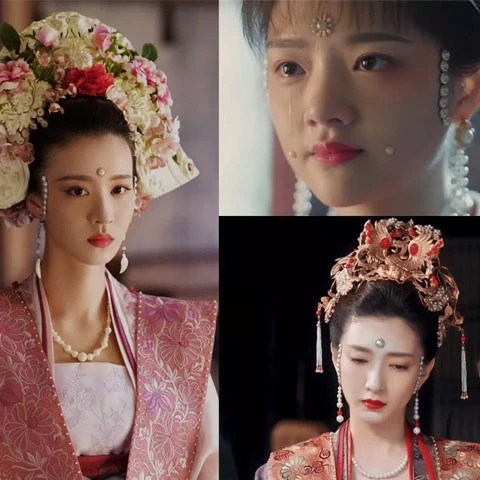
Song Dynasty face decoration in the drama "Serenade of Peaceful Joy"
Women in the Song Dynasty wore Ru and Ao, and sometimes wear Shan, which were single garments with shorter sleeves, made of lighter materials and colors. Shan was not as short as the Ru, but was lighter and therefore more popular among Song women.
The Moxiong (抹胸) was also a favorite among the girls of the Song Dynasty. Unlike the Baofu (抱腹) which was only used as underwear, the Moxiong can be worn outside in the Song Dynasty, which was quite fashionable.
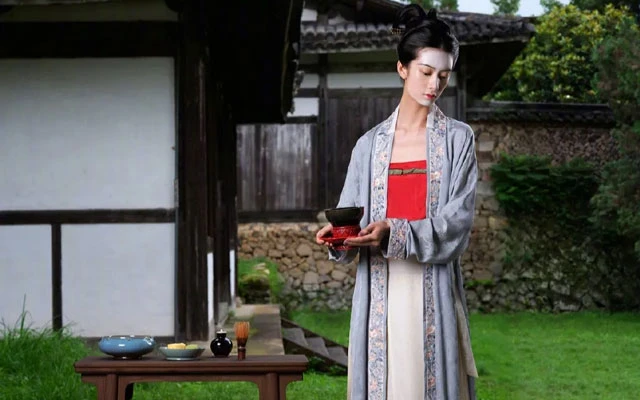
The restored hanfu shot by Harper's BAZAAR
Ku (裤, similar to the pants) were also very iconic in the Song Dynasty. Ku in the Song Dynasty was crotchless, and women's pants were generally not exposed outside, and would be covered inside the skirt.
Similar to the Tang Dynasty, women in the Song Dynasty were also fond of high buns and went for exaggerated and flashy hairstyles.

MING DYNASTY
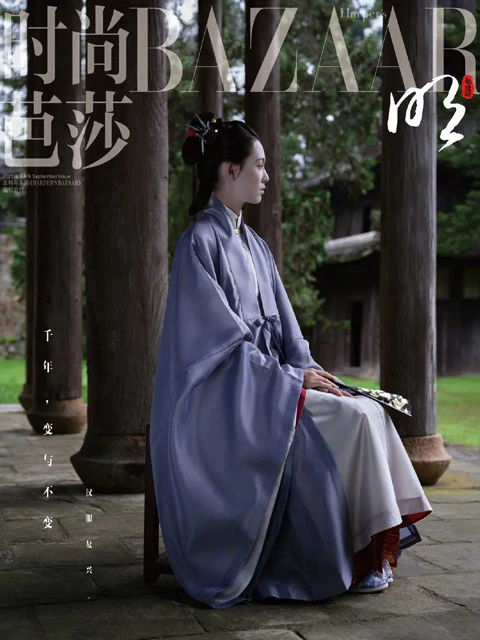
The restored hanfu shot by Harper's BAZAAR
Ming Dynasty women's pursuit of beauty was reached a new height. According to the regulations, ordinary women in the Ming Dynasty could only wear light colors such as purple and green, peach red, and could not use too bright colors like red and yellow.
Harper's BAZAAR's design for the Ming Chinese costume is this not-so-bright purple, and it seems that the Ming Dynasty's rules on clothing color are somewhat similar to modern aesthetics, which prefer low-saturation colors.
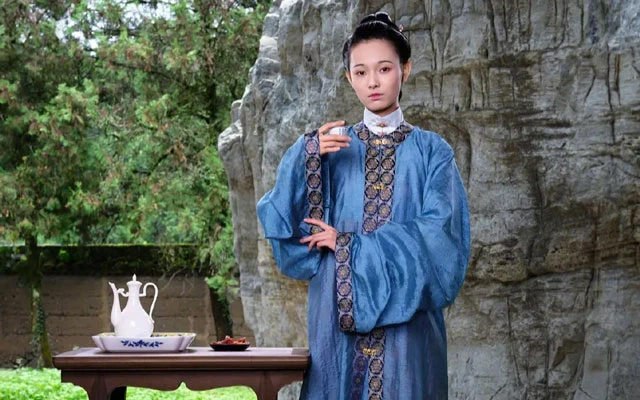
The restored hanfu shot by Harper's BAZAAR
Beizi (褙子) were often worn by women in the Ming Dynasty, which were a long cape-like coat with large sleeves and a wide body. For commoner women, the Beizi could be used as a formal dress and was a sign of dignity.
In some periods of the Ming Dynasty, women could not use jewelry, so for ordinary women in the Ming Dynasty, hair ornaments are not too elaborate, mostly simple and good-looking.
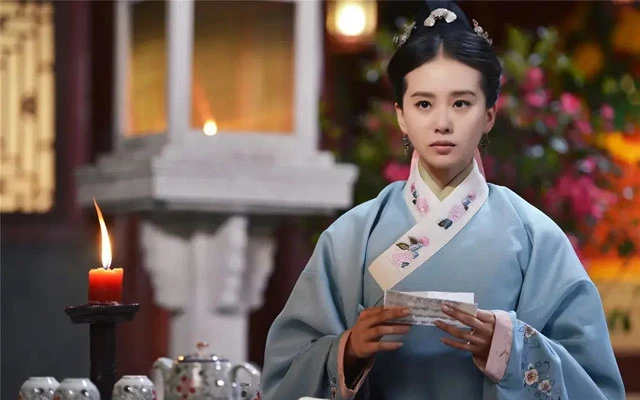
Stills from drama "The Imperial Doctress"
The hair bun style in the Ming Dynasty was about an inch high in the Hongzhi period (弘治), and the high bun became popular in the Zhengde period (正德), and also tied wire into the hair to increase the height of the hair.
Ming Dynasty women also invented a variety of hairstyles. Jiajing period (嘉靖) popular solid bun, low hair and not easy to loose, very practical. Many women in the Wanli period (万历) liked to use damask around their heads to maintain the height of the bun without wearing hairpins. During the Longqing period (隆庆), women liked to wear a round bun and a simple hair ornament in the center of the bun, which was unique and elegant.
Compared with other dynasties, the Ming Dynasty was more strict in rituals, so women's dresses were more dignified and conservative, but the ingenious girls even folded a flower and wrapped it around their hair bun, which had a different beauty.

As a trendsetter, Harper's BAZAAR's "Hanfu Revival" shows us more about the intersection of ancient beauty and modern aesthetics. "Thousands of years, change and no change", become is time, the same is our eternal pursuit of beauty, no matter the millennium and century, the charm of Hanfu can always be amazing.
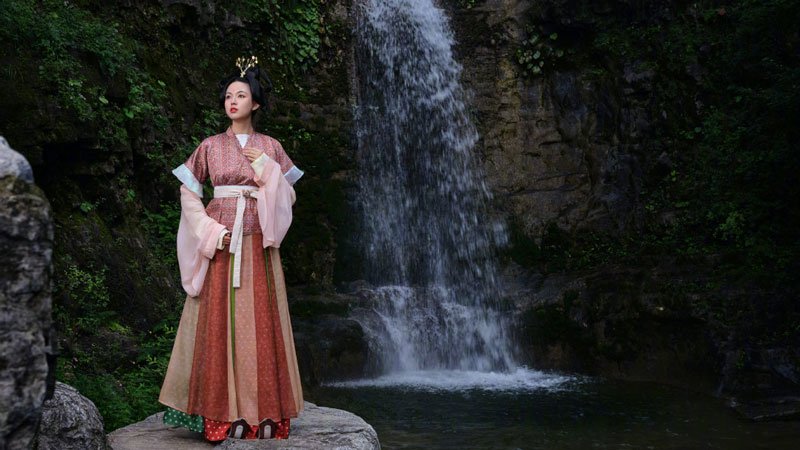
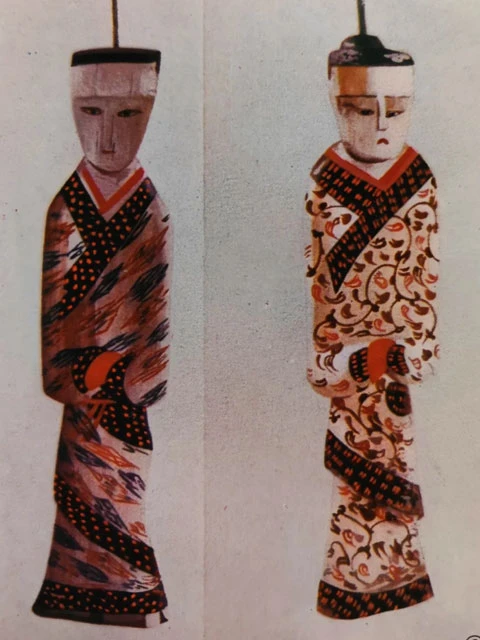
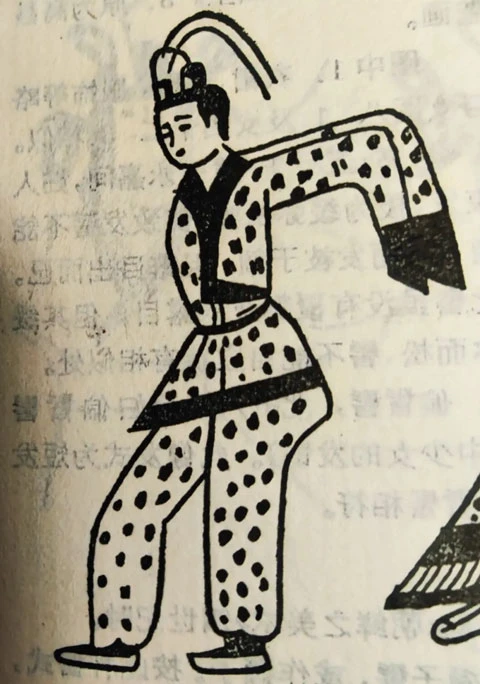
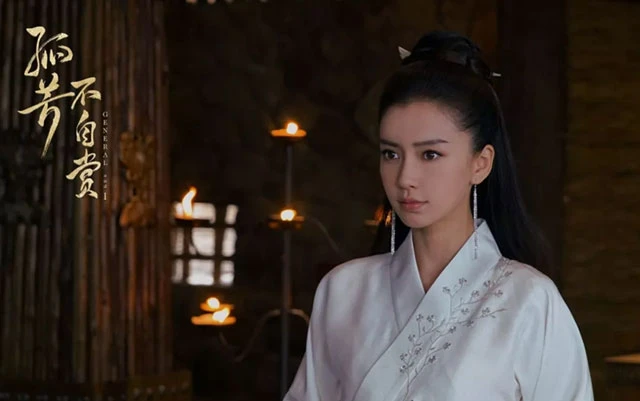
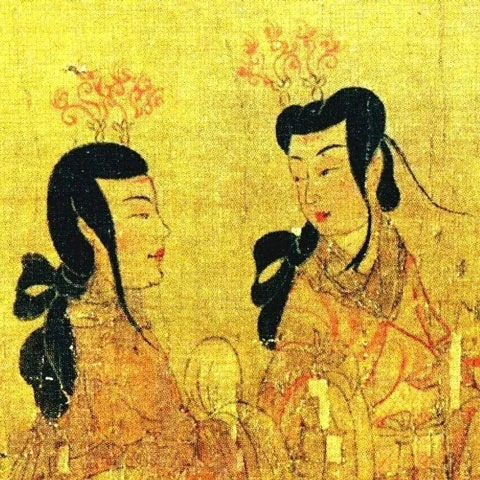
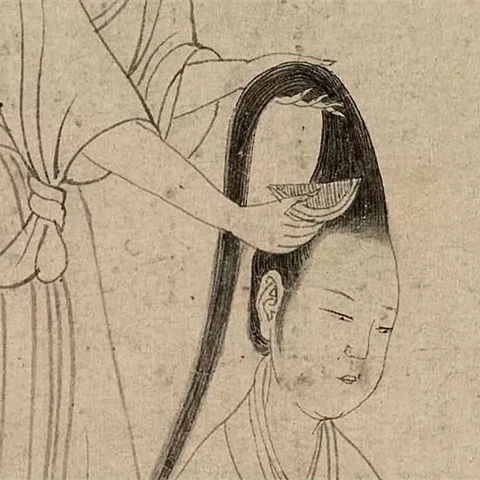
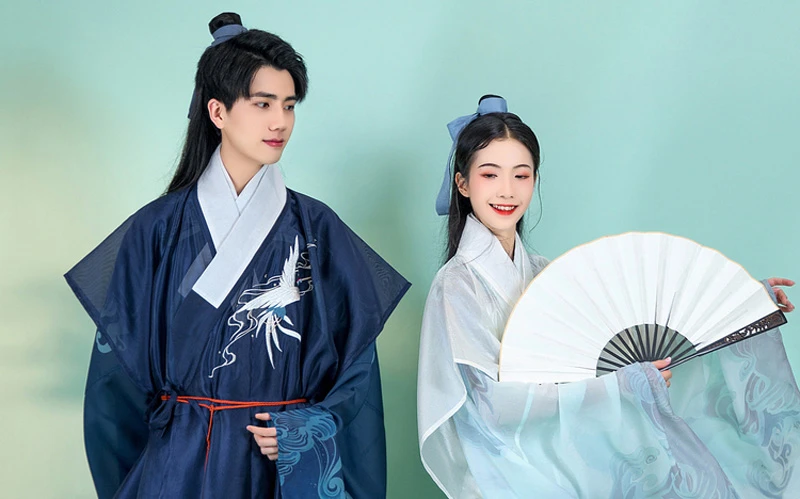
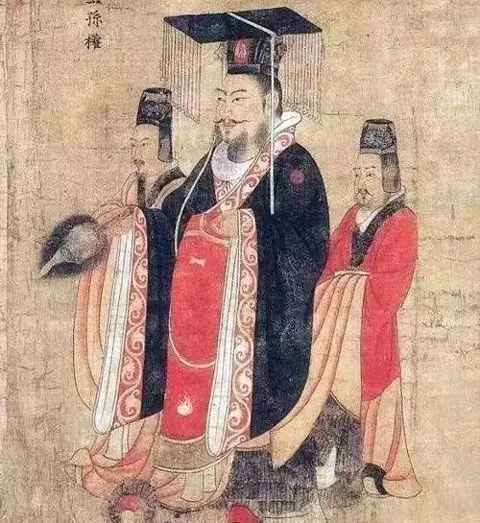
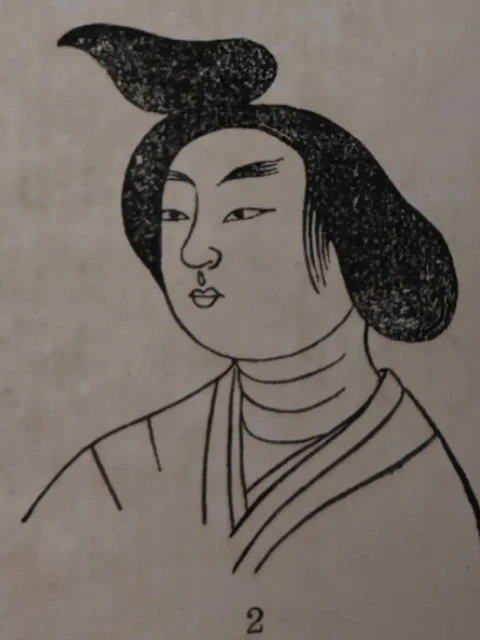
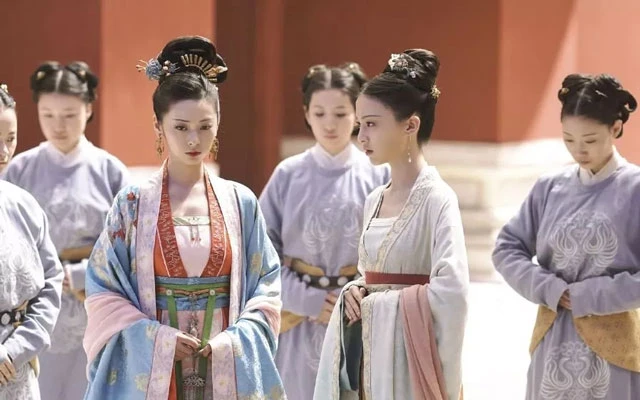
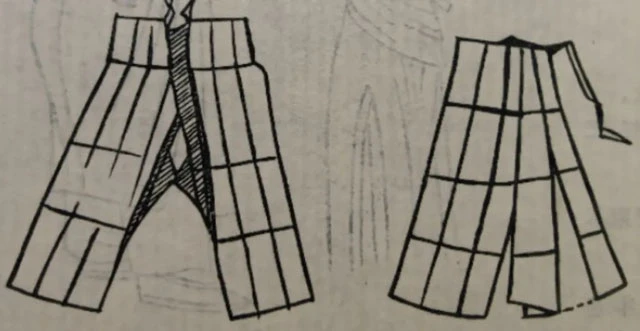
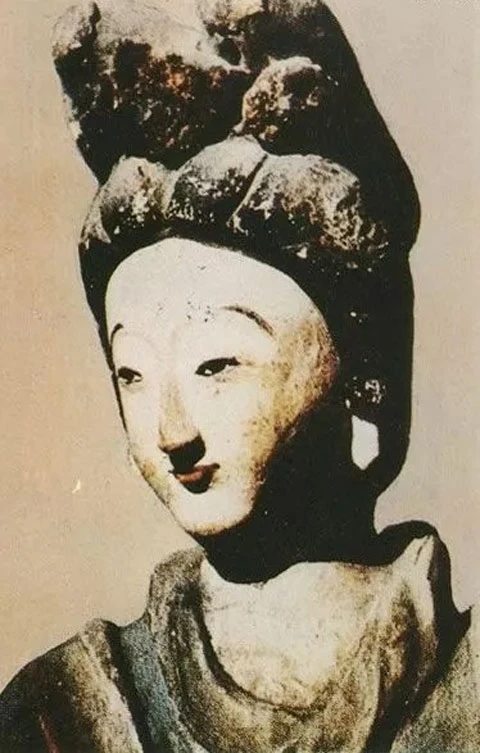
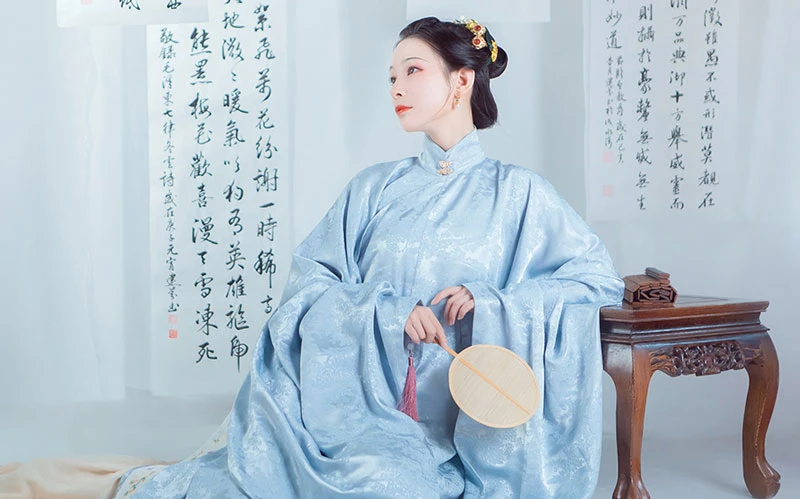
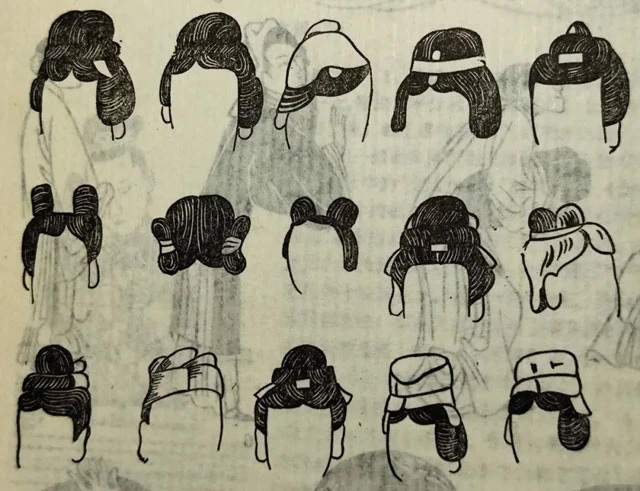

So cool!
How beautiful!